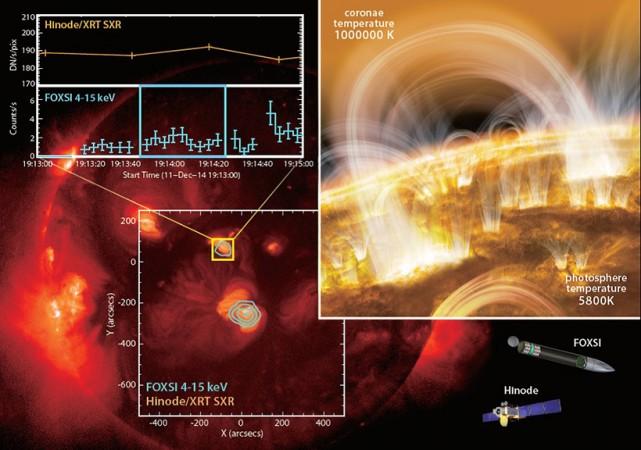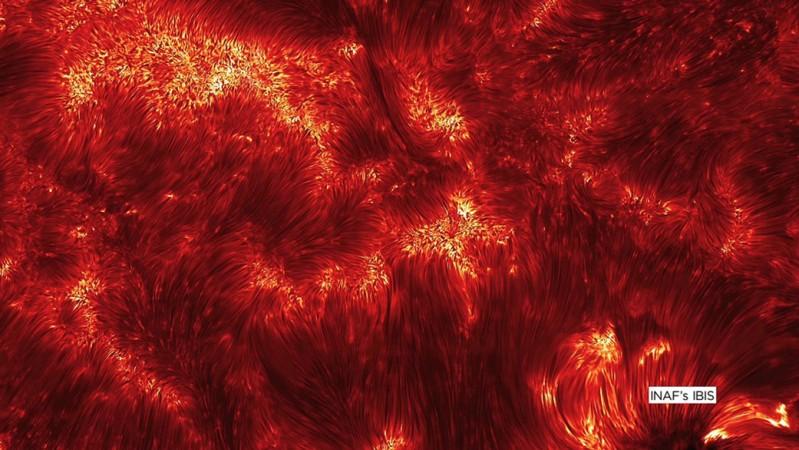
The Sun is made up of four layers, and temperatures in the outer most layer, corona, are the second highest of all the other layers topped only by the temperatures of the core. And researchers now believe that the temperatures are high due to tiny solar flares which are hard to spot from Earth.
ALSO READ: Planet-eating twin stars Kronos discovered by astronomers
Data accumulated by Focusing Optics X-ray Solar Imager (FOXSI) instrument was used to carry out this study. Shin-nosuke Ishikawa of Japanese Aerospace Exploration Agency speculates that nanoflares are responsible for heating up the corona.
Studies have also revealed that on average, the core is about 15 million degrees Celsius while the corona is only one to two million degrees. However, there are occasionally highly active parts of the corona called solar flares where temperatures can go above 20 million degrees Celsius.
READ: All about egg-shaped dwarf planet Haumea!
"The finding was made by a combination of hard X-ray data from FOXSI (Focusing Optics X-ray Solar Imager) sounding rocket experiment and data from Hinode solar observatory. The frequent occurrence of nanoflares has been regarded as a promising agent for maintaining the solar corona at a high temperature of several million Kelvin," a JAXA statement said.
A solar sounding rocket, which is financed by NASA and devised by the University of California, Berkeley, named FOXSI, had taken its second flight on December 11, 2014. Though the flight was just for 15 minutes, the observations and data collected were enough for the researchers to collect proof of the nanoflares.

"The key to this result is the sensitivity in hard X-ray measurements. Past hard X-ray instruments could not detect quiet active regions, and the combination of new technologies enables us to investigate quiet active regions by hard X-rays for the first time," Ishikawa said.
In this research, soft X-rays were those that prevailed below 3 KeV, while hard X-rays were those above 3 KeV.
ALSO READ: China's FAST radio telescope detects two pulsars during trial run
"This is a proof of existence for these kinds of events. There's basically no other way for these X-rays to be produced, except by plasma at around 10 million degrees Celsius (18 million degrees Fahrenheit). This points to these small energy release happening all the time, and if they exist, they should be contributing to coronal heating," said Steve Christe, project scientist for FOXSI at NASA's Goddard Space Flight Center in Greenbelt, Maryland, and an author on the study.
With the help of FOXSI, the astronomers were able to analyse the weak X-ray signals which were formed in Corona's extremely hot plasma, and the soft X-rays were observed by the researchers using Hinode's X-ray telescope. The data collected by the imager and the telescope were then combined by the researchers and a temperature structure of the region of corona which was analysed by the astronomers was prepared.
ALSO READ: NASA findings on Mars' seafloor deposits offer clues to origin of life on Earth
"This particular observation doesn't tell us exactly how much it contributes to coronal heating. To fully solve the coronal heating problem, they would need to be happening everywhere, even outside of the region observed here," Christe stated.









